
Exploring the Serene Beauty of Helambu Trek
Discover the tranquil beauty and cultural richness of the Helambu Trek, a hidden gem in the Himalayas offering stunning landscapes and traditional Sherpa hospitality.
The Helambu Trek in Nepal is a serene and captivating journey for those looking to experience the natural beauty and cultural richness of the Himalayas. Located close to Kathmandu, this trek offers a unique blend of lush forests, terraced fields, and traditional Sherpa villages, providing an immersive experience into the local way of life. The trek typically spans 5-8 days, depending on your pace and chosen route. As you walk through the lush rhododendron forests and cross sparkling streams, you will be treated to stunning views of snow-capped peaks. The Helambu region is known for its rich biodiversity, and birdwatchers will delight in spotting rare Himalayan species. One of the highlights of the Helambu Trek is the opportunity to interact with the warm and hospitable Sherpa people. Their vibrant culture and traditions are evident in the many monasteries and chortens scattered along the trail. The trail is less crowded than other popular treks in Nepal, making it an ideal choice for those seeking a peaceful and less commercialized trekking experience.
Local tips in Helambu Trek
- Best Time to Visit: The best seasons for trekking in Helambu are spring (March to May) and autumn (September to November) when the weather is clear and pleasant.
- Permits: Ensure you obtain the necessary trekking permits, including the TIMS card and Langtang National Park entry permit.
- Guides and Porters: Hiring a local guide or porter can enhance your trekking experience and help support the local economy.
- Altitude: Although not very high, acclimatize adequately as some parts of the trek reach elevations above 3,500 meters.
- Local Cuisine: Try local Sherpa dishes like Thukpa (noodle soup) and Tsampa (roasted barley flour) for an authentic culinary experience.
Exploring the Serene Beauty of Helambu Trek
The Helambu Trek in Nepal is a serene and captivating journey for those looking to experience the natural beauty and cultural richness of the Himalayas. Located close to Kathmandu, this trek offers a unique blend of lush forests, terraced fields, and traditional Sherpa villages, providing an immersive experience into the local way of life. The trek typically spans 5-8 days, depending on your pace and chosen route. As you walk through the lush rhododendron forests and cross sparkling streams, you will be treated to stunning views of snow-capped peaks. The Helambu region is known for its rich biodiversity, and birdwatchers will delight in spotting rare Himalayan species. One of the highlights of the Helambu Trek is the opportunity to interact with the warm and hospitable Sherpa people. Their vibrant culture and traditions are evident in the many monasteries and chortens scattered along the trail. The trail is less crowded than other popular treks in Nepal, making it an ideal choice for those seeking a peaceful and less commercialized trekking experience.
When is the best time to go to Helambu Trek?
Iconic landmarks you can’t miss
Langtang National Park
Explore the breathtaking landscapes and rich biodiversity of Langtang National Park, a Himalayan paradise for adventurers and nature lovers.

Ama Chhumo Yangri
Experience the tranquility and beauty of Ama Chhumo Yangri, a serene Buddhist temple nestled in the stunning Helambu region of Nepal.

Ama Yangri Peak(Ama Chhumo Yangri)
Discover the breathtaking beauty and spiritual serenity of Ama Yangri Peak, a hidden gem in the heart of Helambu, Nepal.

Ama Yangri Peak base camp
Discover the breathtaking beauty of Ama Yangri Peak Base Camp in Helambu, where adventure meets serenity amidst the majestic Himalayas.

Helambu Great Trail
Experience the breathtaking beauty and rich culture of Helambu Great Trail, a premier trekking destination in Nepal's majestic Himalayas.

Helambu Great Trail हेलम्बु ग्रेट ट्रेल
Explore the breathtaking beauty and rich cultural heritage along the Helambu Great Trail in the heart of the Himalayas.

Ganja La Trail
Explore the breathtaking Ganja La Trail in Nepal's Langtang region, where stunning landscapes and rich culture await every adventurous tourist.

Wilderness Excursion - Helambu Trek
Explore the breathtaking landscapes and rich culture of Helambu on the Wilderness Excursion Trek, a must-visit destination for adventure seekers in Nepal.
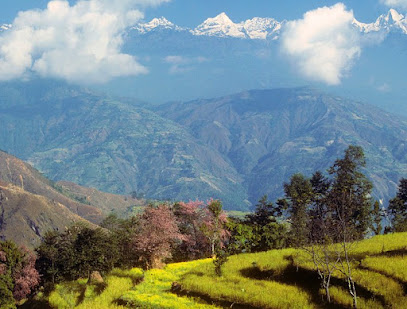
Unmissable attractions to see
Garden of Dreams
Discover tranquility at the Garden of Dreams in Kathmandu, a beautifully restored oasis of lush gardens and serene water features perfect for relaxation.

Jhor Waterfall.
Experience the serene beauty of Jhor Waterfall, a natural wonder in Tokha, Nepal, perfect for nature lovers and adventure seekers.

Nagarjun Forest Reserve
Explore the lush landscapes and serene beauty of Nagarjun Forest Reserve, a hidden gem near Kathmandu that offers a perfect escape into nature.
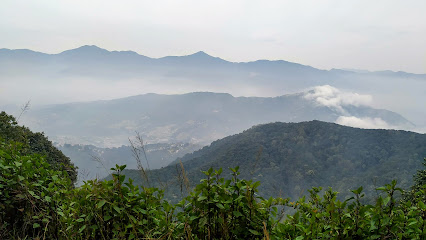
Bhandarkhal Jungle
Discover the natural beauty and tranquility of Bhandarkhal Jungle, a lush urban park in Kathmandu perfect for nature lovers and relaxation seekers.

National Museum of Nepal
Discover the cultural richness of Nepal at the National Museum, home to exquisite artifacts and a deep dive into the nation’s history.

Jamacho Gumba
Experience tranquility at Jamacho Gumba, a serene Buddhist temple offering stunning views and a peaceful retreat from the bustling Kathmandu Valley.

Dhap Dam
Discover the serene beauty of Dhap Dam in Gokarneshwor, Nepal, where nature meets tranquility and adventure awaits every traveler.

Tarebhir
Discover Tarebhir, a tranquil tourist attraction in Gokarneshwor, Nepal, perfect for nature lovers and those seeking peaceful retreats.

Bagdwar
Discover the serene beauty of Bagdwar, a stunning tourist attraction in Sundarijal, Nepal, perfect for nature lovers and adventure seekers.

Bhundole Ground
Bhundole Ground: Your peaceful picnic retreat in the heart of Dakshinkali, surrounded by stunning natural beauty.

Bishnudwar Waterfall
Experience the breathtaking beauty of Bishnudwar Waterfall, a hidden gem in Budhanilkantha, perfect for nature lovers and adventurers alike.

Mailung Waterfall
Experience the breathtaking beauty of Mailung Waterfall in Dandagaun, a serene escape amidst Nepal's stunning landscapes.
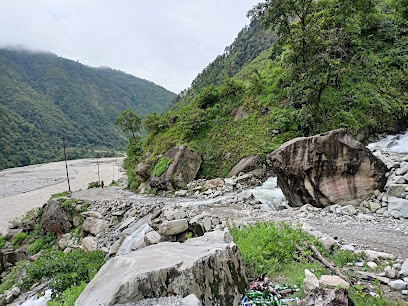
Kakani View Point
Discover the stunning natural beauty and panoramic Himalayan views at Kakani View Point, just a short drive from Kathmandu.

Langtang Trek
Explore the breathtaking Langtang Trek in Nepal, a perfect blend of stunning landscapes and rich cultural experiences in the heart of the Himalayas.

Gurje Bhanjyang
Explore the tranquil hiking trails of Gurje Bhanjyang and immerse yourself in the natural beauty of the Himalayas.

Essential places to dine
Le Sherpa Restaurant
Experience the best of fine dining at Le Sherpa Restaurant in Kathmandu - where local flavors meet international cuisine.

HELAMBU GUEST HOUSE
Experience authentic Nepali cuisine with stunning mountain views at Helambu Guest House – your gateway to adventure in Nepal.

Hotel Green View & Lodge, Mangin Goth, 3285m
Experience unparalleled comfort amidst breathtaking mountain views at Hotel Green View & Lodge - your perfect retreat in Ichok, Nepal.

Hotel Samsara
Discover tranquility and authentic Tibetan cuisine at Hotel Samsara in beautiful Langtang.

Hotel Malla & Resturant
Experience authentic Nepali flavors amidst the stunning landscapes of Syapru Besi at Hotel Malla & Restaurant.

Peace Hotel and Lodge
Discover tranquility at Peace Hotel and Lodge in Thulo Syabru – your gateway to breathtaking Langtang adventures with comfort and local cuisine.

Hotel Blue Star
Experience authentic Nepali cuisine at Hotel Blue Star, your perfect retreat after exploring the breathtaking Langtang region.

THOKS Mo:Mo: Center
Experience authentic Tibetan flavors at THOKS Mo:Mo: Center in Langtang, where traditional momos and local delicacies await.

House
Discover authentic Nepali flavors at House Restaurant in Budhanilkantha - where every meal is a celebration of culture.

Markets, malls and hidden boutiques
Kalapatthar Trekking Store
Explore the heart of trekking gear in Kathmandu at Kalapatthar Trekking Store, your one-stop shop for outdoor adventure essentials.

Ocean Trekking Gear | Best Trekking Gears Shop.
Discover top-quality outdoor gear at Ocean Trekking Gear, your trusted shop in Kathmandu for trekking adventures and exploration.

Himalaya Gears (Trekking shops in Thamel, Kathmandu)
Discover the best trekking gear and clothing in Thamel, Kathmandu, at Himalaya Gears, where your Himalayan adventure starts.
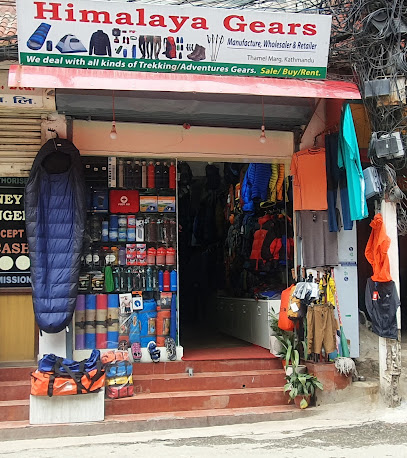
Outdoor Compass Shop
Discover top-quality outdoor gear at the Outdoor Compass Shop in Kathmandu—your essential stop for trekking and adventure supplies.

Sunrise Trekking Store (Trekking Shop in Thamel, Kathmandu)
Discover quality trekking gear and expert advice at Sunrise Trekking Store in Thamel, Kathmandu - your gateway to Himalayan adventures.
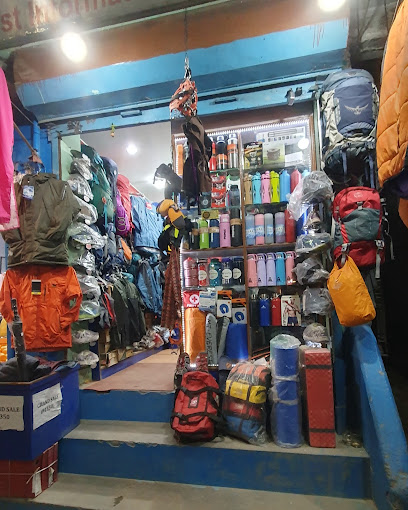
Gorkha Zone Khukuri House
Explore Gorkha Zone Khukuri House in Thamel, Kathmandu - Your destination for authentic Nepali khukuris and unique souvenirs.

Trekking Clobber
Discover quality trekking gear and clothing at Trekking Clobber in Thamel, Kathmandu - your essential stop for outdoor adventures!

Makalu E-Traders | Trekking gears in Nepal
Discover high-quality trekking gear at Makalu E-Traders – your gateway to adventure in the heart of Kathmandu.

Holyland Hiking Shop
Explore the best trekking gear and expert advice at Holyland Hiking Shop in Kathmandu's vibrant Thamel district.

Helambu
Discover the delightful Helambu Bakery, a perfect blend of fresh flavors and stunning Himalayan views in Nepal.
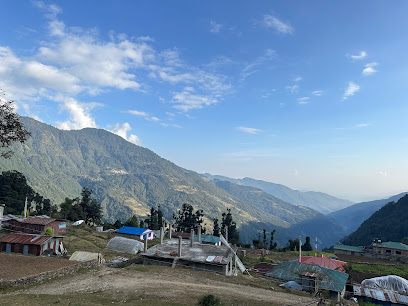
HIMALAYAN GEAR TRADING PVT.LTD@Best trekking gear shop
Explore the Himalayas fully equipped with top-notch trekking gear from Himalayan Gear Trading Pvt. Ltd in Kathmandu, your trusted adventure partner.

Sherpa Apparel #1 Place For Trekking Jackets
Experience the best trekking jackets and outdoor gear at Sherpa Apparel in Thamel, Kathmandu, where adventure meets affordability.

Himalayan Trekking Gear
Explore the best trekking apparel at Himalayan Trekking Gear in Thamel, Kathmandu – your ultimate outdoor adventure hub.
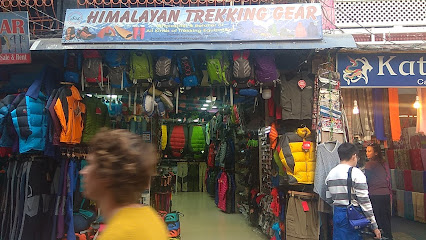
Alpine Trekking Gears
Discover top-quality trekking gear at Alpine Trekking Gears in Thamel, Kathmandu, your essential stop for exploring the majestic Himalayas.
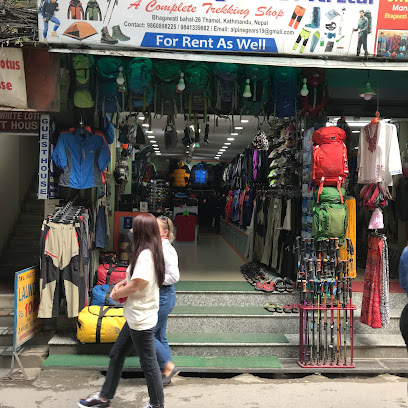
Kailash trekking shop
Explore the best outdoor gear at Kailash Trekking Shop in Thamel, Kathmandu, your trusted partner for trekking adventures in the Himalayas.

Essential bars & hidden hideouts
Purple Haze Rock Bar
Discover the electrifying vibes and live rock music at Purple Haze Rock Bar in the heart of Kathmandu's vibrant Thamel district.

Kathmandu Grill Restaurant
Experience a flavorful journey at Kathmandu Grill, where delicious grilled dishes meet vibrant Nepalese hospitality in the heart of Thamel.

LOD - Lord of the Drinks
Dive into the vibrant nightlife of Thamel at Lord of the Drinks, where exquisite cocktails and electrifying music create unforgettable memories.

Sam's Bar
Discover the vibrant nightlife of Kathmandu at Sam's Bar, where great drinks and a lively atmosphere await every traveler.
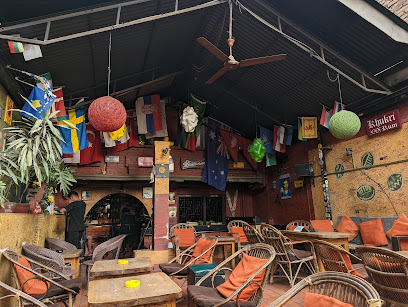
Electric Pagoda Bar & Cafe
Experience the vibrant atmosphere and delicious culinary offerings at Electric Pagoda Bar & Cafe in the heart of Kathmandu's Thamel.
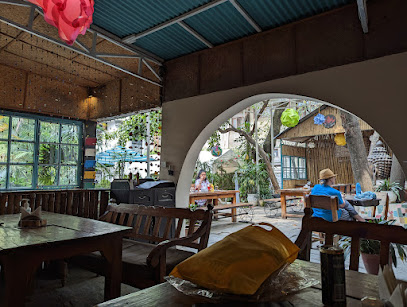
Reggae Bar (रेग्गे बार)
Immerse yourself in the lively atmosphere of Reggae Bar, where vibrant music meets delicious cuisine in the heart of Kathmandu's nightlife.
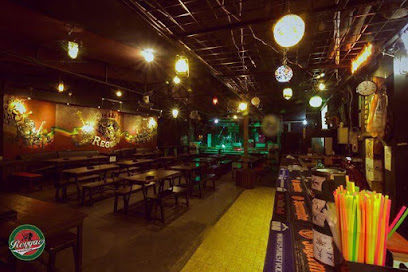
Buddha Bar
Experience the enchanting ambiance and delectable cuisine of Buddha Bar in Kathmandu's lively Thamel district, a perfect retreat for tourists.

Everest Irish Pub
Discover the lively ambiance and delicious Irish cuisine at Everest Irish Pub, a must-visit spot in Kathmandu's vibrant Thamel district.
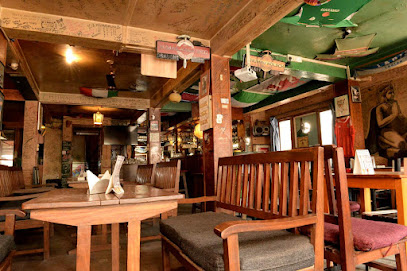
Jazz Upstairs
Discover the heart and soul of Kathmandu's nightlife at Jazz Upstairs, where live jazz meets a warm, inviting atmosphere.

Irish Pub
Experience the authentic taste of Ireland in Kathmandu at this lively Irish pub, where great food meets vibrant atmosphere.

Ace Lounge Restaurant & Bar
Experience the vibrant flavors of Nepal at Ace Lounge Restaurant & Bar, where Continental, Indian, and Nepalese cuisines come together in a cozy setting.

Tom And Jerry Pub
Discover the lively atmosphere of Tom And Jerry Pub in Thamel, Kathmandu, where local flavors meet international cuisine in a vibrant setting.

Namaste Pub
Discover the heart of Kathmandu's nightlife at Namaste Pub, where great drinks, delectable food, and live music await your presence.

Fat Monk's Bar
Discover the vibrant nightlife at Fat Monk's Bar in Thamel, Kathmandu - a perfect blend of local flavors and a welcoming atmosphere.

Nepal Micropub
Explore the vibrant beer culture at Nepal Micropub in Kathmandu, where local brews and a cozy atmosphere await every visitor.

Local Phrases about Helambu Trek
-
- Helloनमस्ते
[namaste] - Goodbyeबिदा
[bida] - Yesहो
[ho] - Noहोइन
[hoin] - Please/You're welcomeकृपया
[krupaya] - Thank youधन्यवाद
[dhanyabad] - Excuse me/Sorryमाफ गर्नुहोस्
[maaf garnuhos] - How are you?तपाईंलाई कस्तो छ?
[tapailai kasto cha?] - Fine. And you?राम्रो छ। तपाईंलाई?
[ramro cha. tapailai?] - Do you speak English?तिमी अंग्रेजी बोल्छौ?
[timi angreji bolchhau?] - I don't understandम बुझ्न सक्दैन
[ma bujhna sakdain]
- Helloनमस्ते
-
- I'd like to see the menu, pleaseमेनू हेर्न चाहन्छु, कृपया
[menu hernu chahanchu, krupaya] - I don't eat meatम भांसामा खाँदैन
[ma bhansama khandain] - Cheers!चियर्स!
[cheers!] - I would like to pay, pleaseम पेस गर्न चाहन्छु, कृपया
[ma pes garn chahanchu, krupaya]
- I'd like to see the menu, pleaseमेनू हेर्न चाहन्छु, कृपया
-
- Help!मद्दत गर्नुहोस्!
[maddat garnuhos!] - Go away!अरुदै जानुहोस्!
[arudai januhos!] - Call the Police!प्रहरीलाई बोलाउनुहोस्!
[praharilai bolaunuhos!] - Call a doctor!डाक्टरलाई बोलाउनुहोस्!
[daktarlai bolaunuhos!] - I'm lostम गुमिरहेको छु
[ma gumiraheko chu] - I'm illमलाई बिरामी छ
[malai birami cha]
- Help!मद्दत गर्नुहोस्!
-
- I'd like to buy...म खरिद गर्न चाहन्छु...
[ma kharid garn chahanchu...] - I'm just lookingमैले मात्र हेर्दैछु
[maile matra herdai chu] - How much is it?यो कति पर्छ?
[yo kati parchh?] - That's too expensiveयो धेरै महँगो छ
[yo dherai mahango cha] - Can you lower the price?के तपाईं मूल्य कम गर्न सक्नुहुन्छ?
[ke tapailai mulya kam garn saknuhunchha?]
- I'd like to buy...म खरिद गर्न चाहन्छु...
-
- What time is it?कति बज्यो?
[kati bajyo?] - It's one o'clockएक बज्यो
[ek bajyo] - Half past (10)दसबजे ढाई घण्टा
[dasbaje dhai ghanta] - Morningबिहान
[bihan] - Afternoonदिउँसो
[diunso] - Eveningसाँझ
[sanh] - Yesterdayहिजो
[hijo] - Todayआज
[aaj] - Tomorrowभोलि
[bholi] - 1एक
[ek] - 2दुई
[dui] - 3तीन
[tin] - 4चार
[chaar] - 5पाँच
[paanch] - 6छ
[chha] - 7सात
[saat] - 8आठ
[aath] - 9नौ
[nau] - 10दश
[dash]
- What time is it?कति बज्यो?
-
- Where's a/the...?...कहाँ छ?
[...kaha cha?] - What's the address?ठेगाना के हो?
[thegana ke ho?] - Can you show me (on the map)?तपाईंले मलाई देखाउन सक्नुहुन्छ?
[tapailae malai dekhaun saknuhunchha?] - When's the next (bus)?अर्को कहिले आउँछ (बस)?
[arko kahile aun chha (bas)?] - A ticket (to ....)एक टिकट (...मा)
[ek ticket (...ma)]
- Where's a/the...?...कहाँ छ?
History of Helambu Trek
-
The Helambu region, nestled in the Himalayas of Nepal, has been inhabited for centuries. The area is predominantly occupied by the Hyolmo people, an indigenous ethnic group believed to have migrated from Tibet. Their rich cultural heritage, including unique customs, language, and traditions, traces back to ancient times, providing a living testament to the region's early human settlements.
-
Helambu is renowned for its spiritual significance, dotted with ancient Buddhist monasteries and stupas. The most notable among them is the Tarkegyang Monastery, dating back several centuries. These monasteries are vital centers for the practice of Tibetan Buddhism, attracting monks and pilgrims from across the region. The spiritual practices and religious festivals here are deeply intertwined with the daily lives of the local people.
-
Historically, the Helambu region was part of the Hyolmo Kingdom, a small but significant dominion in the central Himalayas. The kingdom played a crucial role in the trade routes between Nepal and Tibet, facilitating the exchange of goods and culture. The remnants of this kingdom, including ancient fortifications and historical sites, offer a glimpse into its past glory.
-
The devastating earthquake of April 25, 2015, had a profound impact on the Helambu region. Many of the ancient structures, including monasteries and traditional homes, were damaged or destroyed. However, the resilient spirit of the Hyolmo people led to significant rebuilding efforts. The reconstruction process also provided an opportunity to preserve and restore cultural heritage sites, ensuring that the history of Helambu continues to be remembered and celebrated.
-
In recent decades, Helambu has become a popular destination for trekkers and cultural tourists. The region's pristine natural beauty, coupled with its rich cultural and historical tapestry, attracts visitors from around the world. Trekking routes, such as the Helambu Circuit, offer an immersive experience through picturesque villages, terraced fields, and ancient monasteries, allowing tourists to engage deeply with the local culture and history.
Helambu Trek Essentials
-
To reach the Helambu Trek, the nearest international airport is Tribhuvan International Airport (TIA) in Kathmandu, Nepal. From Kathmandu, you can take a bus or hire a private vehicle to Sundarijal or Melamchi Bazaar, which are common starting points for the trek. The bus ride from Kathmandu to Sundarijal or Melamchi Bazaar typically takes around 2-4 hours, depending on traffic and road conditions.
-
Public buses and minibuses are available from Kathmandu to Sundarijal or Melamchi Bazaar. For a more comfortable journey, you can hire a private jeep or taxi. Once on the trek, transportation options are limited to walking, as the trail passes through remote villages and rugged terrain. Porters and guides can be hired in Kathmandu or at the trailheads to assist with carrying luggage and navigating the route.
-
The official currency in Nepal is the Nepalese Rupee (NPR). While major hotels and some restaurants in Kathmandu accept credit cards, it is advisable to carry cash, especially when trekking in remote areas like Helambu. ATMs are available in Kathmandu, but it is wise to withdraw sufficient cash before starting the trek, as ATMs are scarce in the trekking region.
-
Helambu is generally a safe trekking destination, but it is essential to take standard precautions. Avoid trekking alone and always inform someone about your trekking plans and expected return date. While Helambu has a low crime rate, it is always best to stay vigilant and keep an eye on your belongings. Avoid walking alone at night in unfamiliar areas.
-
In case of emergency, dial 100 for police assistance and 102 for medical emergencies. It is recommended to have travel insurance that covers medical emergencies and evacuation. For minor health issues, carry a basic first aid kit and any necessary medications. In remote areas, local health posts may offer limited medical services, so it is important to be prepared. Helicopter evacuation can be arranged from Kathmandu in severe cases.
-
Fashion: Do dress modestly, especially when visiting religious sites. Avoid wearing revealing clothing. Religion: Do respect local customs and traditions. Always remove your shoes before entering temples and monasteries. Public Transport: Do be respectful and give up your seat to elderly passengers. Don't eat or drink on public transport. Greetings: Do greet people with a 'Namaste' and a slight bow of the head. Eating & Drinking: Do try local delicacies and accept food offerings graciously. Don't refuse hospitality, as it is considered impolite.
-
To experience Helambu like a local, visit the local teahouses and interact with the villagers. Learn a few basic phrases in Nepali to communicate better with the locals. Participate in local festivals and observe traditional rituals. The Helambu region is known for its rich culture and warm hospitality, so take the time to immerse yourself in the local way of life. Don't miss tasting the local dish 'Dal Bhat' and the traditional Tibetan butter tea.
Nearby Cities to Helambu Trek
-
Things To Do in Kathmandu
-
Things To Do in Bhaktapur
-
Things To Do in Patan
-
Things To Do in Gorkha
-
Things To Do in Bandipur
-
Things To Do in Namche Bazaar
-
Things To Do in Chitwan
-
Things To Do in Pokhara
-
Things To Do in Lumbini
-
Things To Do in Patna
-
Things To Do in Darjeeling
-
Things To Do in Gangtok
-
Things To Do in Siliguri
-
Things To Do in Paro
-
Things To Do in Varanasi













